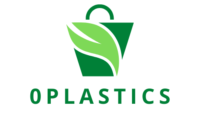The Power of Collaboration: How Partnering with Other Businesses Can Reduce Plastic PollutionPlastic pollution is a global crisis, threatening ecosystems, wildlife, and even human health. While individual businesses can take steps to reduce their plastic footprint, true systemic change requires collaboration. By partnering with other businesses, companies can amplify their impact, share resources, and develop innovative solutions to overcome the plastic pollution challenge.
Here are five key ways businesses can leverage the power of collaboration to reduce plastic pollution:
1. Collective Action on Policy and Advocacy:
- Join forces to advocate for stronger plastic regulations: Businesses can work together to push for policies that restrict single-use plastics, promote extended producer responsibility schemes, and incentivize the use of recycled content. Collaboratively lobbying policymakers and raising public awareness can create a critical mass of support for effective legislation.
- Support and participate in cross-industry initiatives: Several international and national initiatives bring together businesses, NGOs, and governments to tackle plastic pollution. Examples include the New Plastics Economy Global Commitment and the Break Free From Plastic movement. By participating in these initiatives, businesses can learn from each other, share best practices, and amplify their collective voice.
2. Supply Chain Collaboration:
- Work with suppliers to source sustainable alternatives: Partnering with suppliers to develop and source plastic-free or biodegradable packaging materials can have a significant impact. Collaboratively investing in research and development can accelerate the innovation of sustainable alternatives.
- Improve waste management and recycling: Businesses can collaborate to set up efficient waste collection and recycling systems, particularly in areas with limited infrastructure. This can include joint investments in recycling facilities, developing shared logistics for waste transportation, and promoting consumer education on proper waste disposal.
3. Knowledge Sharing and Best Practice Exchange:
- Create platforms for peer-to-peer learning: Businesses can establish online or offline forums to share best practices, challenges, and success stories related to plastic reduction. This knowledge exchange can inspire new approaches and accelerate the adoption of proven solutions across different industries.
- Develop and promote industry-specific guidelines: Collaboratively develop and disseminate best practice guidelines for plastic reduction tailored to specific sectors, such as food and beverage, consumer goods, or hospitality. These guidelines can provide practical guidance for businesses of all sizes to implement effective plastic reduction measures.
4. Joint Marketing and Consumer Engagement:
- Launch joint marketing campaigns: Partnering with other businesses to raise public awareness about plastic pollution and promote sustainable alternatives can have a much wider reach and impact than individual campaigns.
- Develop and promote eco-labels and certifications: Collaboratively develop and promote industry-wide eco-labels or certifications that identify products with low plastic footprints. This can help consumers make informed choices and incentivize businesses to reduce their plastic use.
5. Investing in Innovation and Technology:
- Pool resources for research and development: Partnering with research institutions and other businesses can help share the financial burden and accelerate the development of innovative solutions for plastic reduction, such as biodegradable materials, recycling technologies, and alternative packaging systems.
- Explore and invest in circular economy models: Collaborate to develop and implement circular economy models for plastics, where plastic waste is reused and recycled instead of ending up in landfills or the environment. This can involve designing products for easy disassembly and reuse, establishing closed-loop recycling systems, and developing markets for recycled plastic content.
Conclusion:
By working together, businesses can harness the power of collaboration to overcome the plastic pollution crisis. Through collective action on policy, supply chain collaboration, knowledge sharing, consumer engagement, and investment in innovation, businesses can make a significant and lasting impact on the planet and society. Remember, a rising tide lifts all boats, and when it comes to tackling plastic pollution, collaboration is the key to navigating towards a cleaner and healthier future.
Additional Resources:
- The New Plastics Economy Global Commitment: https://www.newplasticseconomy.org/
- Break Free From Plastic: https://www.breakfreefromplastic.org/
- World Business Council for Sustainable Development: https://www.wbcsd.org/
